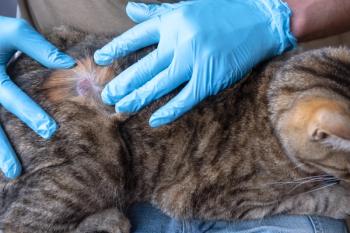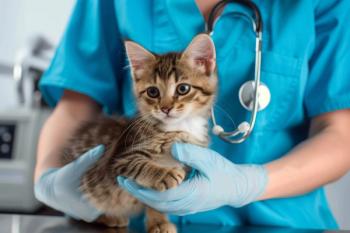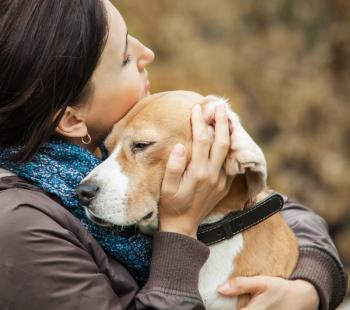
Race, gender play role in WesternU admissions
Pomona, Calif.-Western University of Health Sciences (WesternU) opens its doors this fall not only as the nation's newest veterinary college, but as the only program boasting a 15 percent male class.
Pomona, Calif.-Western University of Health Sciences (WesternU) opens its doors this fall not only as the nation's newest veterinary college, but as the only program boasting a 15 percent male class.
Dr. Shirley Johnston
In a profession now dominated by white women, WesternU officials are determined to enroll a student body representative of society, says Dean Shirley Johnston, DVM. That means basing entry on more than test scores and grade point averages, by including life skills, economic background as well as race, age and gender.
The selection process is not affirmative action, which by definition forces educators to hold seats for racial, societal or gender minorities. But it does put all applicants passing the initial screening process into a pool for bias selection by administrators, Johnston says.
Of the 86 students enrolled in the private college's Fall 2003 charter class, 13 are men and 10 are Hispanic. The college's only black selected applicant turned down entry into the program, but Johnston is confident more African Americans will apply and be selected in the future.
"I'm pleased with our process, because this pool enables us to select a class that looks more like the demographic of society," Johnston says. "This allows us to select all the men.
"We want a well-rounded, diversely educated class. We're hopeful that as years pass, we'll be able to use this method to provide us a vet school that mirrors society instead of what the vet schools look like around the country."
Fact Box
Changing the face of veterinary students
Among graduates of the country's other 27 veterinary colleges, racial and gender minorities are scarce and application pools reflect historically low numbers in terms of qualified male applicants. Classes are upwards of 95 percent female, and in 1999, the nation's veterinary medical student body consisted of 5,648 white students compared with 135 blacks, 226 Hispanics and 204 Asians, the Association of American Veterinary Medical Colleges (AAVMC) reports.
WesternU is likely the only veterinary college to employ racial or gender bias selection. Not even Tuskeegee University School of Veterinary Medicine, which boasts a 55 percent black student body, weights minority applicants. Because the school shares historical ties with racial minorities, its applicant pool reflects more blacks, says Dr. Thomas Graham, director of veterinary admissions.
"We probably have the largest number of racial minorities applicants because we have a reputation that stems from when African Americans could not go to other veterinary colleges," he says.
A fine line
But just because other veterinary programs aren't applying this so-called brand of affirmative action doesn't mean it's not necessary, Johnston says. As U.S. Supreme Court justices prepare to rule on a lawsuit challenging the University of Michigan's racially weighted point system for its undergraduate and law school programs, Johnston says she's not concerned with receiving similar backlash. WesternU's model is less controversial because its applicants are not numerically ranked, she says.
"Most affirmative action challenges have been because people with better credentials got cast aside because someone was selected affirmatively," Johnston says. "And we're not giving points affirmatively in the beginning of the process.
"The other thing that makes our process legitimate is we're defining the criteria for admissions. GPA (grade point average) and test scores are only about a fourth of the credentials you need to get into our vet school. Historically some schools have weighted GPA and test scores and used them as a cutoff. We're just not doing that," she adds.
How it works
Based on University of Southern California's (USC) selection program for its medical college, WesternU's admissions involves unique prerequisites as well as a three-step process whereby applicants are reviewed and scored in a variety of categories such as academic potential, personal potential and an interview of behavioral questions.
"It's not straight scoring," says Dr. Lara Rasmussen, the veterinary program's admissions chair. "We looked at gender, career goals, international travel, geographical diversity - anything that made the student different. We also gave a lot of leeway in terms of prerequisites. The goal, of course, is to give applicants the opportunity to customize their education and look a lot different than their peers."
It's not a cookie cutter formula, but designed to admit more than one type of applicant, says Dr. Erin Quinn, USC associate dean of admissions for the medical program and author behind its selection process. The program is designed to increase the number of underrepresented minorities in human medicine. Its goal is to improve healthcare, she says.
"What you're looking to see is an ability to succeed and a trend of improvement," she says.
Small applicant pool
For its inaugural class, Johnston didn't receive the daunting number of applicants expected, but rather a small pool of 189. The reason could stem from lack of publicity or non-membership in the AAVMC's Veterinary Medical College Application Service, which allows prospective students to apply to more than 20 colleges from the United States and Canada at once.
Still, Johnston says she's "ecstatic" with demographic results of the college's first class.
"We're delighted," she says. "As a private non-profit school, we're under scrutiny that we will admit poor quality students just to get revenue. We need to have our classes filled and filled with excellent students."
Whether due to lack of publicity, apathy or low application numbers, Johnston says she hasn't heard many complaints against her system. But that doesn't mean the program is free from criticism.
"People are always going to complain as long as we have more applicants than we have space for," she says.
Newsletter
From exam room tips to practice management insights, get trusted veterinary news delivered straight to your inbox—subscribe to dvm360.




